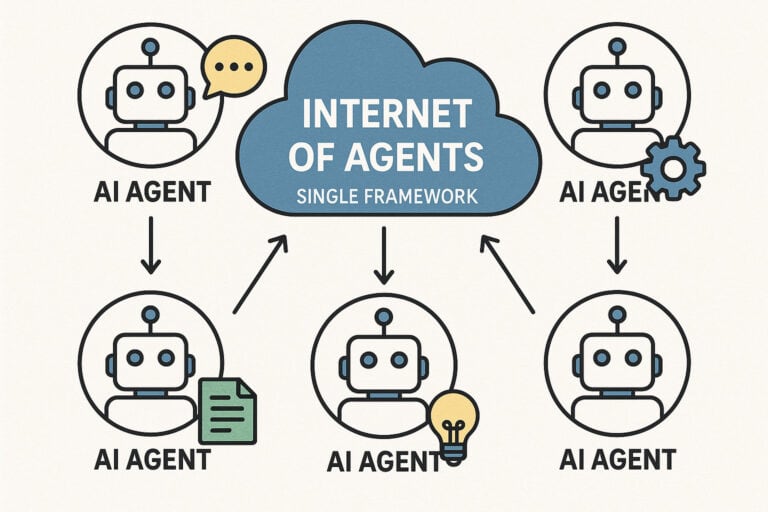AI agents are popping up everywhere. But how do we ensure that all these agents can work together effectively? That is what AGNTCY from Outshift, Cisco’s incubator, is working on. It was already open source, but now Cisco is donating the entire stack to the Linux Foundation. Under a neutral umbrella, it can grow faster and better.
The idea behind AGNTCY from Outshift (and Cisco) is that the arrival of AI Agents places and will continue to place all kinds of demands on the surrounding infrastructure. A single agent can do interesting and useful things on its own. However, that is just a single agent that can perform a single specific task well. The expectation, and indeed the desire, is that these agents will be able to work together and thus achieve much more.
Several things are needed to enable such collaboration between agents. They must be able to communicate with each other and always have access to the right data. The Agent-to-Agent (A2A) protocol enables communication between agents, while Model Context Protocol (MCP) servers enable AI models (and therefore also agents) to access the right data.
AGNTCY
However, A2A and MCP alone are not enough. There also needs to be an overarching framework to ensure that everything runs smoothly. If only because there are many non-deterministic aspects to the AI used by agents. This can potentially cause problems.
AGNTCY was and is an open-source attempt by Cisco, more specifically Outshift, to come up with such an underlying framework. We spoke to Vijoy Pandey, SVP/GM of Outshift, about this at Cisco Live earlier this year. He described AGNTCY as an “open-source, open-spec manifestation of the Internet of Agents.” It should provide answers to all kinds of questions that arise when rolling out a collaborative system of agents. “How do you find the agents that are best suited for a task? How do you bring them together? And how do you give them an identity?” are some of the questions that need to be answered.
Components of AGNTCY
So far, Outshift has already built several components for the AGNTCY framework:
- Agent Discovery: this can be seen as a DNS for agents, where agents can find each other and learn about each other’s capabilities. Based on this, they can decide whether or not they fit together in an agentic workflow.
- Agent Identity: with agents, you have to look at identity in a fundamentally different way. Agents are given a task-based identity and are only allowed to perform the tasks for which they are deployed.
- Agent Messaging: Secure Low-latency Interactive Messaging (SLIM) enables agents, people, and tools to communicate with each other. According to Cisco, this is not only done at low latency, but also across different data types and is quantum-safe.
- Agent Observability: this should make it possible to gain insight and visibility across complete (and complex) workflows.
- Protocol Integration: the components of AGNTCY must be compatible with A2A and MCP.
Cisco is now donating this entire stack to the Linux Foundation. The neutral status of this party should ensure that the community gets the most out of it. The Linux Foundation has made many projects popular in this way. Think, for example, of Kubernetes and PyTorch, but there are many more. Those projects also started inside a single vendor, but have now more or less become an industry standard.
Cisco hopes and expects that this will also happen with AGNTCY. Hopefully, they will come up with a better name, because the current one doesn’t really roll off the tongue and is certainly not easy to type. But that’s neither here nor there when it comes to the relevance to this article.
Dell, Oracle, and Google Cloud see the value
There is no shortage of interest in AGNTCY. Cisco, Dell Technologies, Galileo (which has been involved in this project since March), Google Cloud, Oracle, and Red Hat are the so-called formative members of the project at the Linux Foundation. In addition, there are more than 75 members who have already contributed to AGNTCY and will, of course, continue to support it.
Realistically, this is the only way that a framework such as AGNTCY and the Internet of Agents that will enable it can be successful. It transcends the expertise of any single player in the market. Just as all individual AI agents can only work together within a solid framework with the right architecture, insights, and governance, the same applies to the development of that framework. This also requires the interaction of all kinds of different players who contribute to the success of the framework. It is virtually impossible to manage this centrally and neutrally from one of the participants. In the open-source world, this quickly leads to the Linux Foundation as a natural home.
Finally, it is worth noting that Cisco does not appear to have any plans to scale back its contribution to AGNTCY for the time being. In other words, the working groups within Outshift that were involved in AGNTCY will continue their work unabated, Pandey promises in a blog post.
Read also: After AIOps, now there is AgenticOps: what is it and what can you do with it?
